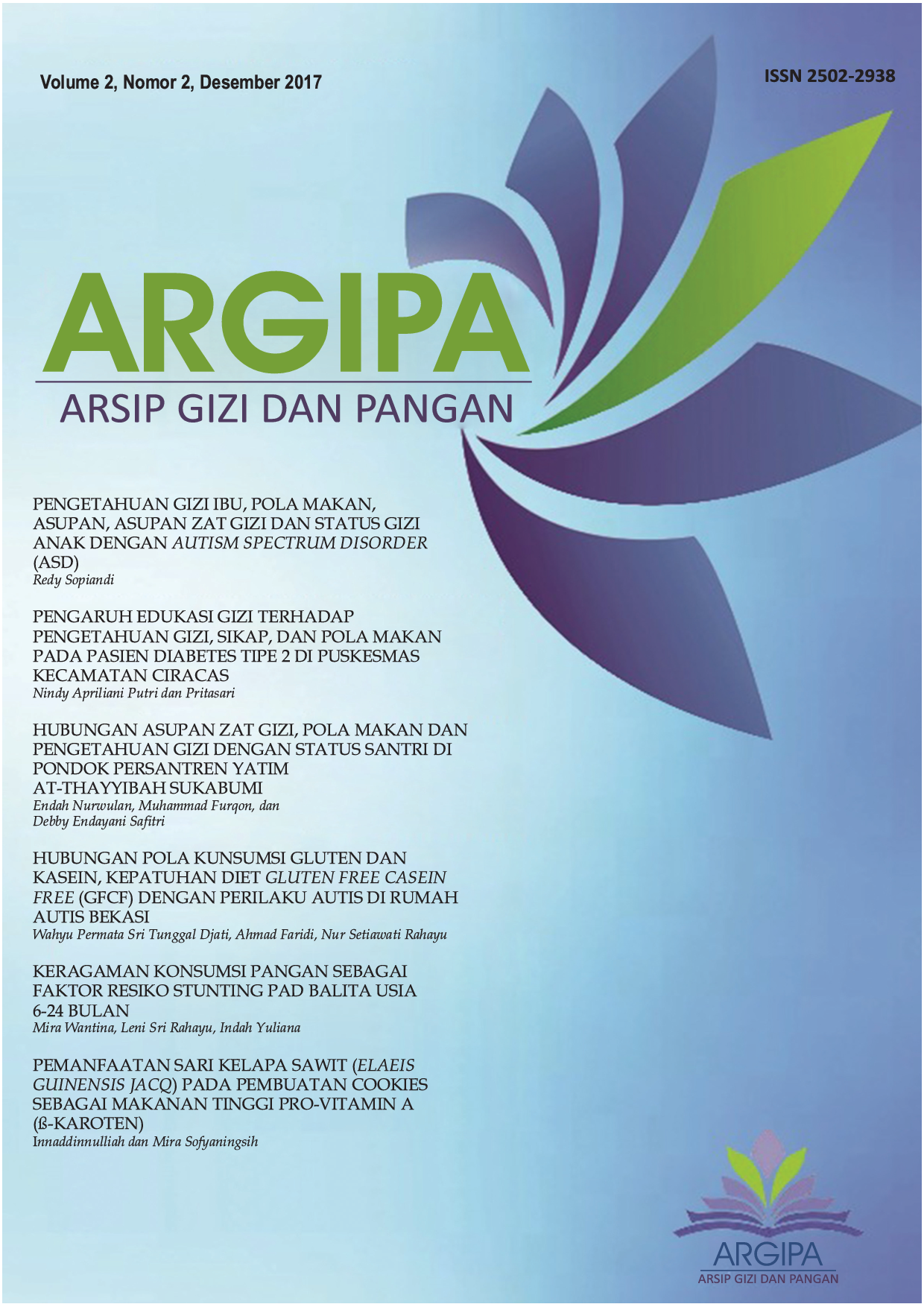Use of palm juice (Elaeis Guinensis Jacq) in making cookies as pro-vitamin A (β-carotene) high food
Abstract
Beta-carotene in the recipes modification such as biscuits and noodles usually use grainy
palm oil and red palm oil. The utilization of beta-carotene in the form of palm extract to modify the
recipes of making cookies has not been done. This study aimed to produce high provitamin A (β-
carotene) cookies using palm juice. The treatment of research was the comparison of margarine and
palm juice in the cookies: F0 (1:0), F1 (1:1) F2 (1:3) F3 (0:1). The determination of the best palm
juice cookies was by using hedonic test with semi-trained panelists. Data analysis used the
ANOVA test, if the p-value was <0.05 the test was continued by Duncan test. The children
acceptance to the best palm juice cookies compared to control cookies were analyzed by Friedman
test. The result of this research the addition of water in making the best palm juice showed 100 ml /
500 grams of palm fruit. ANOVA test results the addition of palm juice was significantly affected
on the quality of the color and texture of cookies. At the same time, there was no significant effect on
the quality of taste and aroma of cookies. The results of ANOVA test to hedonic test was the
addition of palm juice gave a significant effect on the acceptance of color, aroma, taste, and texture
of cookies. The best formula was cookies with formula 1 (1:1) which had a high average of 3,8 on
hedonic test. The best palm juice cookies with 30 grams of serving size contain 152 kcal energy,
8,16 grams fats, 1,84 grams protein, 18 grams carbohydrates, and 4020 μg β-carotene per serving.
The cookies can be claimed as high β-carotene cookies.

















